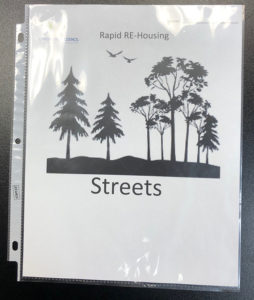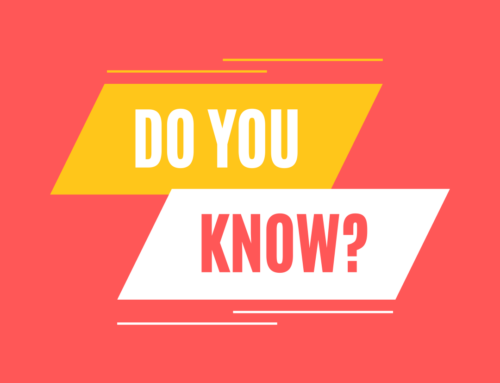 “A mental model is an explanation of someone’s thought process about how something works in the real world. It is a representation of the surrounding world, the relationships between its various parts and a person’s intuitive perception about their own acts and their consequences” (Wikipedia). It is a picture, story, or analogy of a situation.
“A mental model is an explanation of someone’s thought process about how something works in the real world. It is a representation of the surrounding world, the relationships between its various parts and a person’s intuitive perception about their own acts and their consequences” (Wikipedia). It is a picture, story, or analogy of a situation.
We use mental models all the time in our direct practice with our program participants. Mental models are a way to communicate abstract information concretely and allow people to process it more easily. It steps up the timeframe because you get right to it. Let me give you an example.
We provide rapid re-housing services to homeless individuals. It is a HUD program, a housing-first initiative that seeks to rapidly re-house folks who are deemed “category one,” literally homeless by HUD. To be literally homeless, by definition, is living on the streets, living in a homeless shelter, living in a car, or fleeing domestic violence; those are the four eligibility requirements for rapid re-housing. The street outreach team verifies folks, confirming they are literally homeless. Orientations are provided to folks for the rapid re-housing program. Initially, the orientations consisted of program information with a lot of handouts. These are homeless people, 6–8 at the table, and it seemed like there was a lot of noise. I wanted to work with them to make the orientation meaningful.
I asked staff to pull off the internet a picture of a shelter, a picture of a car, a picture of the streets, and a picture of an apartment. These pictures or mental models represented program eligibility and desired housing goals. As we talked through it internally, they asked what I wanted to do with the pictures. My first goal was to understand the desires of those living in homelessness.
Secondly, I wanted to hear from them what their ideas were about moving from homelessness into an apartment. There is a team of about five staff working in homeless services. The street outreach coach, who himself was formerly homeless, wondered if the exercise might be too traumatic for them. I explained that there isn’t a bone in my body that wanted to re-traumatize anybody, but if we don’t understand where they are now, we can’t help them get where they want to be—namely housed. The team felt that it would be good for me to lead the first group so that they could learn how to use mental models in this orientation setting. I was fine with that.
 I will never forget it. We were in our lower Bucks County office. Staff had prepared the mental models. I placed the three mental models on the table. Six people and a dog attended the orientation. Everybody introduced themselves, we had snacks and food, and I explained that homelessness is tough and complicated and has emotions and feelings attached to it. I said today, for a little bit, I want to understand the emotions and feelings that are associated with homelessness—what is life like for you? I explained what mental models were. I had them choose the mental model that applied to them; e.g., are you living in your car, the homeless shelter, or on the streets? Choose the picture that applies to your situation.
I will never forget it. We were in our lower Bucks County office. Staff had prepared the mental models. I placed the three mental models on the table. Six people and a dog attended the orientation. Everybody introduced themselves, we had snacks and food, and I explained that homelessness is tough and complicated and has emotions and feelings attached to it. I said today, for a little bit, I want to understand the emotions and feelings that are associated with homelessness—what is life like for you? I explained what mental models were. I had them choose the mental model that applied to them; e.g., are you living in your car, the homeless shelter, or on the streets? Choose the picture that applies to your situation.
I told them that participation was a choice. If they would like to participate, take the mental model that applied to them. Everyone at the table was either from the shelter or living in a car. I asked them to write on the mental model what their life is like in that space. I offered quiet time to reflect on that. Everyone participated. Everyone took the time to write on their mental model. Once I knew everyone had wrapped it up, I said, “If you are willing, I would like to go around and have you share with the group what you wrote.” Everyone participated. I wrote on the flip chart what they shared and collected the mental models at the end.
There was a gentleman on my left who was 80 years old and living in his car. He had written on top of the car “terrifying.” I asked him to help me understand what “terrifying” meant. He took his fist and pounded on the table. He said, “I hear that all night. Knocking on my windows, all night long.” It was the most profound thing I had ever done. I thanked all of them for sharing. The second step was to put a mental model of an apartment on the table.
That is what rapid re-housing is—securing housing. I explained that rapid re-housing is moving you from homelessness to housing in an apartment. If you are interested, I want you to take an apartment mental model and write what you think your life would be like living in the apartment. Everyone participated. Again, I wrote on the flip chart what everyone had shared. The couple who had the dog wrote “No more porta-potties.”
They also wrote on the apartment, “Save money.” I asked them to tell me about that. The man said, “Poverty is expensive.” We went around the room and everyone shared, and I thanked them for sharing a vulnerable space with me. I said, “If you still want this apartment, there are staff around the room to talk to you and start the enrollment process to get you into the rapid re-housing program. It is okay if you don’t do anything today. You can think about it and come by or call tomorrow.”
I’m at a stage of my social work career where I desire everything that I do to be meaningful. I am sold on mental models. I wished I had known about them 26 years ago in the beginning of my career. And I don’t stop there! After we were done, I said to the staff, “Now this mental model of the apartment is what you take to your case management meetings every time, and you set it on the table and remind them of their future story. Because inside that apartment there are essentially the participants’ goals. For example, if they said they want to save money, then you say, ‘We are three months in, but you haven’t saved money. Help me understand how we can reach your goal.’”
 Since we trained in Bridges and Getting Ahead in 2006, we have continued to work at this. It doesn’t come as readily for some staff as it does for others—we work at this too. There isn’t a case management meeting that goes by where we aren’t practicing mental models in some fashion.
Since we trained in Bridges and Getting Ahead in 2006, we have continued to work at this. It doesn’t come as readily for some staff as it does for others—we work at this too. There isn’t a case management meeting that goes by where we aren’t practicing mental models in some fashion.
There was a homeless woman living in her car, and the staff were coming up against some roadblocks. The participant had turned down apartments offered to her, and the staff asked me to come and meet with her. I took the mental model with the apartment and car to the meeting with her. I got to know her first, and toward the end of the meeting, I said, “When I’m in challenging situations, pictures help me organize my thoughts.” I presented her the car and apartment mental models. I said, “We would like to see you move from the car into the apartment. You understand if you choose the car, you have essentially denied the apartment.” I put an X over the apartment mental model. There was dead silence.
The client said, “You don’t like that answer, do you?”
I said, “I respect your choice. I need to know this is your choice. I can live with it if you can live with it. You told me you were safe. You told me about the alarm system in the car and the cops who come by and keep an eye on you. I’m okay with that. If you change your mind and choose the apartment, you should let us know so that we can house you.”
It does work. At a Bridges training I had someone say to me, “Don’t you think it is childish? Won’t people be insulted to use markers and paper during a visit?”
 I said, “No, I don’t. If it is, I will set it aside.” But I take a folder chock full of mental models that clients and staff have done when I do the Bridges trainings.
I said, “No, I don’t. If it is, I will set it aside.” But I take a folder chock full of mental models that clients and staff have done when I do the Bridges trainings.
The work is hard. Our work is hard. The situations are complicated. This tool guides that hard work. It simplifies it. I’m not diminishing the challenges folks face. Mental models are good stuff, and they cut right to the heart of case management and social work, making our interactions with clients meaningful. We use mental models in Getting Ahead too. We don’t separate it out. We incorporate mental models into our culture at Bucks County Opportunity Council.
When I heard Ruby Payne speak in Philadelphia, I felt the Bridges material was the most practical guidance around poverty. It made it meaningful for me to understand and adjust my approach. It captured my heart—the heart of my work.
My gut says yes, the answer is yes. Using mental models makes a difference.








